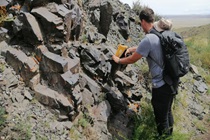 At the beginning of August, participants of the second exploration expedition conducted in the Zadgai Bulag area returned to Poland.
At the beginning of August, participants of the second exploration expedition conducted in the Zadgai Bulag area returned to Poland.
The expedition was launched on 11 July 2025 and the main focus of the research was the search for deposits of critical elements, with a particular focus on tungsten and molybdenum. In addition, many observations of a geomorphological, sedimentological, petrographic and stratigraphic nature were made.
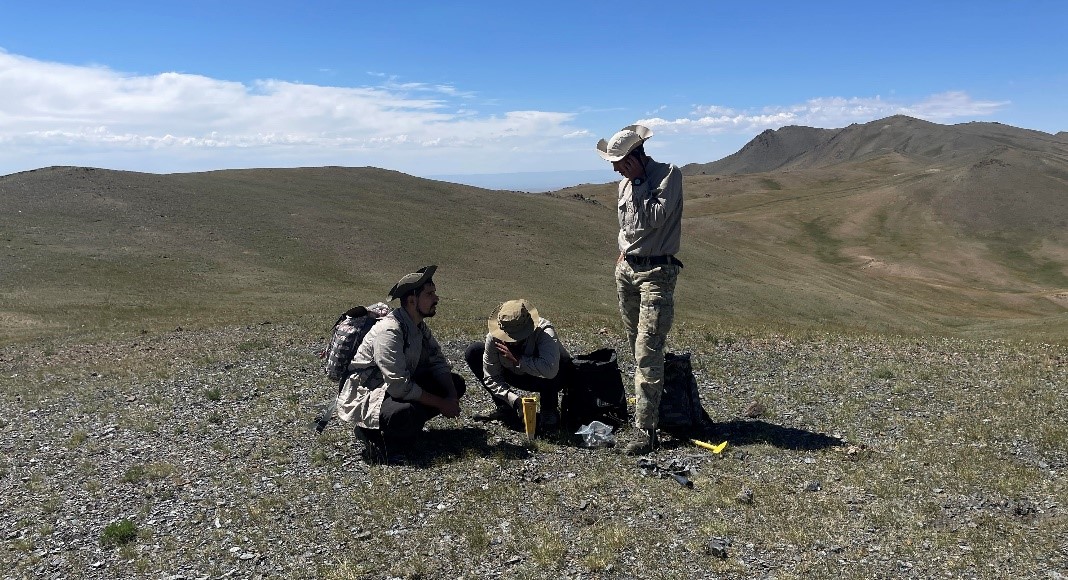
Polish geologists in the course of their research
The study area was located on the southern fringe of the Changay Mountains, within the Bayanchongor aymak, in the Bayanbulag somon. It takes the form of a mountain massif, distinguished in the area by its prominence (approximately 300 m relative height). The shape resembles a trapezoid, with a distinctly longer side in the southern part, where its highest peaks are located. They are directly adjacent to a significant depression in the area, which enhances the impression of the majesty of the entire massif. Geologically, the study area is built up by Neoproterozoic metasedimentary rocks and Palaeozoic intrusions, mainly granitoids.
The head of the research team was Professor Antoni Wojcik of the Geoscience Centre, for whom this was the ninth expedition to Mongolia. Such vast experience of the group leader had a huge impact on the success of the expedition. Persons participating in the expedition included Remus Weekes, M.Sc., from the Department of Raw Materials Policy, Olgierd Pedrycz, M.Sc., from the Department of Regional and Bedrock Geology, M.Sc. Mateusz Moroz from the Carpathian Branch, and Leszek Balicki, MSc and Adam Chaszczewicz MSc of the Geoscience Centre. The expedition received invaluable support from Dr Odpurev Gankhuyag, President of the Mongolian-Polish Friendship Society, who, together with his team, acted as an intermediary in contacts with the local population and the Mongolian administration, and was responsible for running the camp.
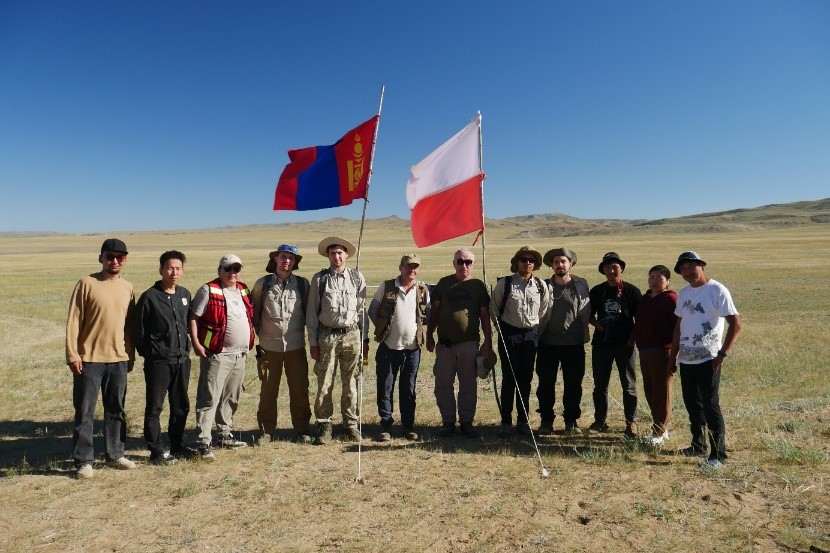
Polish-Mongolian team
Mongolian geologists also participated in the prospecting work. The exchange of knowledge and insights between Polish and Mongolian researchers created a synergy that resulted in the verification of an additional research hypothesis - the occurrence of gold accumulations in black shales.
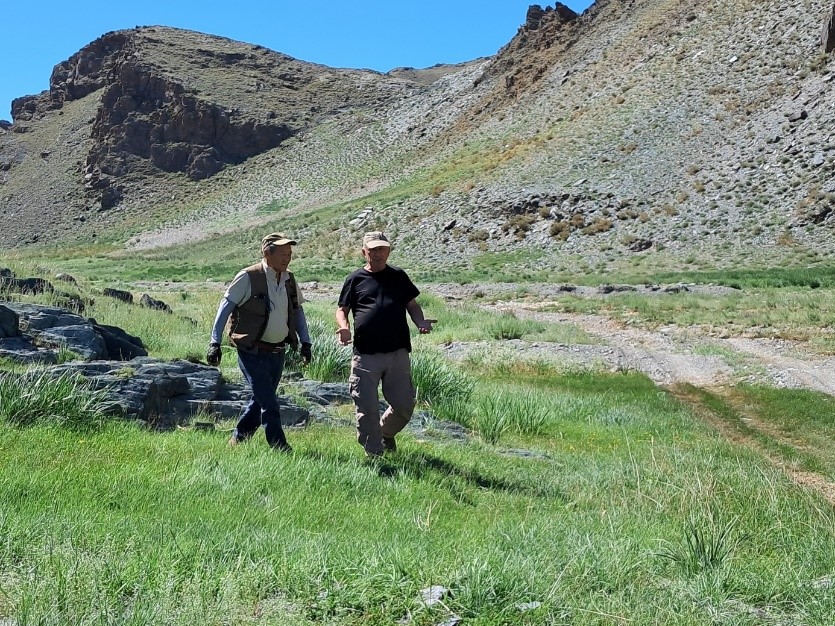
Professor Wójcik immersed in discussion with Mongolian geologist
The total length of the research and reconnaissance marches made by the expedition participants is approximately 85 km. Nearly 540 measurements were taken using a portable pXRF spectrometer. A total of 269 samples were collected, the analysis of which will be the task of both Polish and Mongolian geologists in the coming months. The results of the research will provide answers to questions such as the depositional potential of the area, the age of magmatic intrusions in the study area and the geological history of the formations that build up the massif under study.
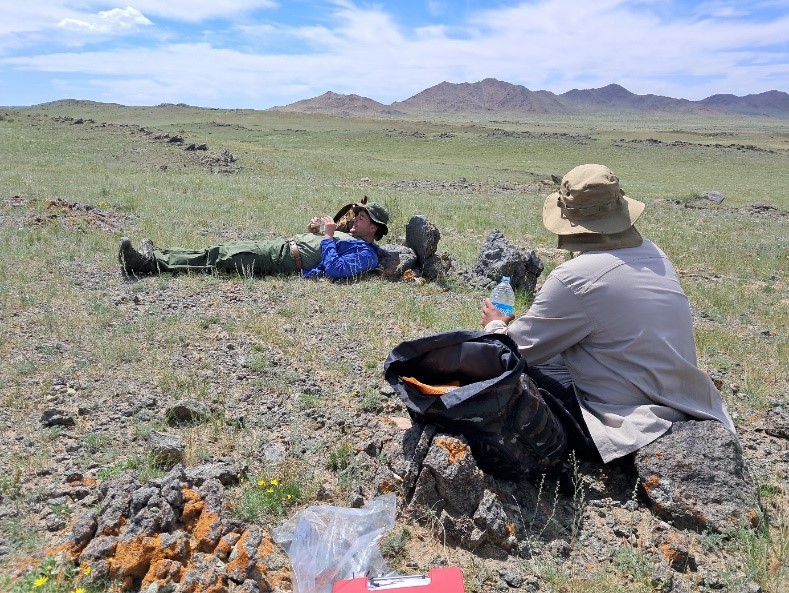
Resting in the field while waiting for transport to the camp
The Polish geologists' camp was visited several times by local delegations. Among others, the somon council from Bayan Bulag was hosted, to whom the samples collected in the field and the methodology for conducting geological surveys were presented.
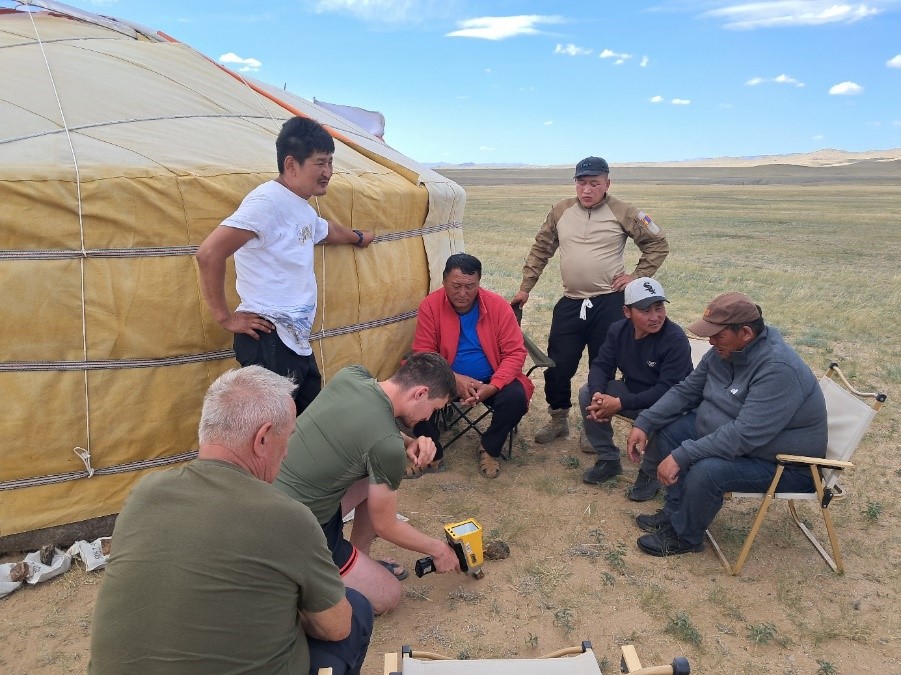
Leszek Balicki presents geochemical research using a portable pXRF spectrometer during a visit to the Bayan Bulag somon council
The Chief Executive of the Mongolian Geological Survey also visited the camp. The discussions held, which took place in a very friendly atmosphere, promise the possibility of continuing cooperation even after the current project has ended.
An equally good atmosphere prevailed during the visit of the expedition participants to the Director's office, in Ulan Bator, where the work carried out was summarised and the possibility of further Polish-Mongolian cooperation was reiterated.
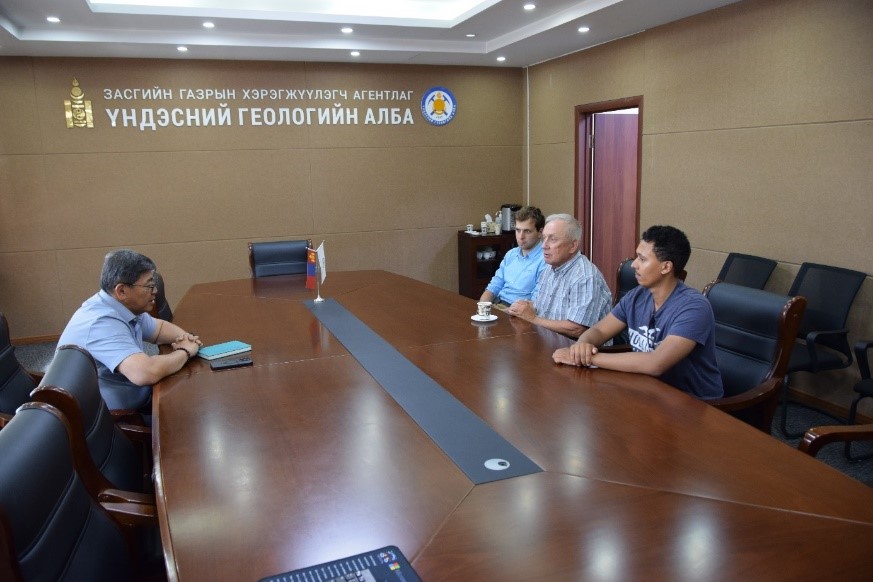
Visit of the Polish expedition to the office of the Chief Director of the Mongolian Geological Survey
Text and photos: Adam Chaszczewicz, Mateusz Moroz, Antoni Wójcik, Olgierd Pedrycz, Leszek Balicki, Remus Weekes














 PGI-NRI offer
PGI-NRI offer Mineral resources of Poland
Mineral resources of Poland  Oil and Gas in Poland
Oil and Gas in Poland 




 Subscribe to RSS Feed
Subscribe to RSS Feed